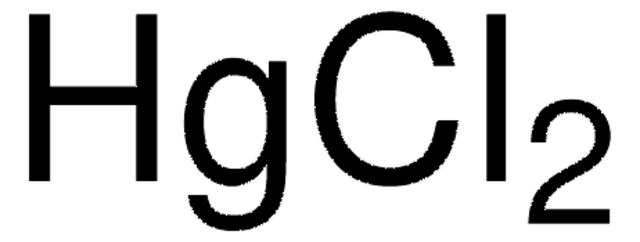655198
Cadmium chloride
technical grade
Synonym(s):
Cadmium dichloride, Dichlorocadmium
About This Item
Recommended Products
grade
technical grade
vapor density
6.3 (vs air)
vapor pressure
10 mmHg ( 656 °C)
form
solid
concentration
≥55.2% Cd (EDTA titration)
mp
568 °C (lit.)
solubility
H2O: soluble >457 g/L at 20 °C (OECD Test Guideline 105)
SMILES string
Cl[Cd]Cl
InChI
1S/Cd.2ClH/h;2*1H/q+2;;/p-2
InChI key
YKYOUMDCQGMQQO-UHFFFAOYSA-L
Looking for similar products? Visit Product Comparison Guide
Application
Signal Word
Danger
Hazard Statements
Precautionary Statements
Hazard Classifications
Acute Tox. 2 Inhalation - Acute Tox. 3 Oral - Aquatic Acute 1 - Aquatic Chronic 1 - Carc. 1B - Muta. 1B - Repr. 1B - STOT RE 1
Storage Class Code
6.1A - Combustible acute toxic Cat. 1 and 2 / very toxic hazardous materials
WGK
WGK 3
Personal Protective Equipment
Choose from one of the most recent versions:
Already Own This Product?
Find documentation for the products that you have recently purchased in the Document Library.
Customers Also Viewed
Our team of scientists has experience in all areas of research including Life Science, Material Science, Chemical Synthesis, Chromatography, Analytical and many others.
Contact Technical Service











